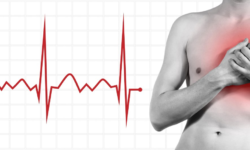When Is Hospitalization Necessary for Migraines?

Migraines are often described as one of the most debilitating forms of headache, characterized by intense pain, sensitivity to light and sound, and sometimes accompanied by nausea or vomiting. While many people manage their migraine symptoms with over-the-counter medications or prescription drugs, there are times when a migraine warrants a trip to the Emergency Room (ER). Knowing when to seek emergency medical care for a migraine is crucial to ensure proper treatment and to rule out any underlying serious conditions. In this article, we will explore the key indicators and circumstances that should prompt you to consider the ER as the appropriate destination when a migraine strikes. Understanding these signs can be a vital step in safeguarding your health and well-being during a migraine episode.
Embarking on a Visit to the Emergency Room Amidst a Debilitating Migraine
Navigating through the labyrinth of agony that a severe migraine can establish, the thought of heading to an emergency room (ER) might seem far-fetched, particularly considering the bustling environment, enveloped by glaring lights and the cacophony of sounds. However, the gravity of a persistent or remarkably excruciating migraine underscores the imperative need for immediate, adept medical intervention. It’s crucial to underline that while migraines are oftentimes isolated incidents, they can occasionally be harbingers of other underlying health issues. Therefore, electing to seek emergency care not only facilitates the alleviation of immediate pain but also acts as a preventative measure against potential, undiagnosed health concerns.
Unlocking the Mysteries Behind Migraine Triggers
A journey through understanding migraines requires a deep dive into the varied elements that can usher in these debilitating headaches. Adequate rest is paramount for holistic health, and consequently, a deficiency in sleep can open the gates to migraine episodes. Moreover, emotional well-being plays an instrumental role, where instances of anxiety and stress become unwanted harbingers of migraine pain.
The sensory environment is an often-underestimated player in the onset of migraines, with overly bright lights, penetrating noises, and potent smells acting as potent triggers. Lifestyle choices, too, weave into the tapestry of causative factors, where indulgence in smoking and consumption of alcohol pose as potential catalysts for migraines.
Delving into the realm of dietary influences, certain foods and medications stand out as notorious migraine culprits, necessitating a mindful approach to consumption habits. Additionally, physiological factors, such as hormonal fluctuations, can sow the seeds for migraine episodes, particularly among women during menstrual cycles.
Adequately intense physical activity and even seemingly benign shifts in weather patterns round out the list of potential triggers, further illustrating the diverse and multifaceted nature of factors that may usher in a migraine attack.
Urgent Medical Intervention for Migraine Episodes
A migraine, in its typical form, can undoubtedly be grueling, yet there are certain warning signs that demand immediate medical intervention. Instances where a migraine veers from its familiar path, unveiling itself through intense severity, sudden onset, extended duration, or resistance to customary medications, necessitate a visit to the emergency room to ensure timely and adequate medical assistance.
When Emergency Room Visits Become Imperative Due to Migraine Indications:
- Elevated Temperature: A significant rise in body temperature, especially one that is inexplicably high, could indicate an underlying concern or complication associated with a migraine episode that warrants thorough medical examination and potential intervention;
- Rigidity in the Neck Area: Experience of an unusually stiff neck, especially when paired with a migraine, could signal a serious condition, like meningitis, and must be addressed immediately to preclude further complications;
- Compromised Respiratory Function: Difficulties or irregularities in breathing, potentially exacerbating the discomfort of a migraine, require prompt attention to assess any potentially severe or concomitant issues;
- Pronounced Dizziness or Unconsciousness: A migraine accompanied by severe dizziness or episodes of losing consciousness can signify a more critical condition, perhaps relating to one’s neurological status, and demands urgent investigation;
- Cognitive Discrepancies: Instances of confusion, alterations in perceptual awareness, or memory impairments, particularly during a migraine, underscore the need for an immediate neurological evaluation to exclude potentially grave conditions;
- Visual or Verbal Communication Issues: Struggles with articulating speech or impairment in visual perception amidst a migraine suggest possible neurological anomalies and require immediate explorative action;
- Muscular Compromises: Experiencing muscle weakness or balance issues concurrently with a migraine is indicative of potential underlying neurological or vestibular dysfunctions, necessitating swift medical attention;
- Inability to Move Limbs: Experiencing paralysis, even if temporary, invites immediate medical scrutiny to discern its origins and mitigate potential risks;
- Persistent Gastrointestinal Distress: Ongoing episodes of diarrhea or vomiting, especially when paired with a migraine, can lead to dehydration and electrolyte imbalance, thus making immediate medical care paramount to prevent further systemic destabilization.
Preserving a meticulous record of manifested symptoms, their duration, and severity proves invaluable in facilitating the healthcare professional to formulate an accurate diagnosis and intervention strategy. Utilizing a symptom diary or a digital application for this purpose, especially during a migraine episode, ensures that relevant information is readily available to share with medical practitioners during crucial diagnostic discussions, thereby enhancing the efficacy of the emergent care provided.
Exploring the Connection Between Migraines and Underlying Conditions
When a debilitating migraine strikes, it can be more than just a painful episode. It might be a red flag signaling an underlying health concern. Rushing to the emergency room (ER) during such a moment of distress can offer crucial insights and timely treatment, ensuring your overall well-being. Let’s delve deeper into how your migraine may be connected to other conditions and what the ER can do for you.
Unveiling the Hidden Dangers: Trauma and Migraines
Have you recently experienced head trauma, perhaps due to a vehicular accident, sports mishap, or workplace incident? Your migraine might not be a mere headache; it could be a result of a concussion. Even if injuries seem invisible, seeking medical evaluation is paramount. Here are some insights to consider:
- Trauma to the head, neck, or spine can lead to hidden injuries;
- Timely assessment can reduce the risk of complications affecting both the brain and the body.
Deciphering the Puzzle: Migraine vs. Stroke
Migraines and strokes can sometimes share bewilderingly similar symptoms, such as severe headaches, numbness, and vision disturbances. When you visit the ER for a migraine, the medical team can help distinguish between the two. Here’s how they do it:
- Diagnostic techniques, including brain imaging, may be used to rule out life-threatening conditions like aneurysms or strokes;
- In-depth questioning about your symptoms and current medications can provide valuable clues.
The Puzzling Case of Pregnancy and Migraines
For expectant mothers, a severe or unusual migraine can raise concerns beyond personal discomfort. It might be a sign of preeclampsia or other complications that jeopardize both your health and your baby’s well-being. Swift action is crucial:
- Seeking immediate medical attention and timely treatment can ensure the safety of both you and your baby;
- ER professionals are equipped to address these specific concerns effectively.
ER’s Migraine Magic: Diagnosis and Treatment
Once you’re in the ER, the medical team employs a range of diagnostic techniques tailored to your symptoms. Here’s a glimpse of what you can expect:

- Brain imaging may be requested to rule out aneurysms or strokes if your symptoms are unusual;
- Persistent or unresponsive migraines will prompt the medical staff to inquire about your pain and current medications.
The Arsenal of ER Medications
ER doctors are well-versed in tackling migraines head-on, providing relief through various means:
- Medications for pain and nausea relief can be administered intravenously or intramuscularly;
- Nonsteroidal drugs or steroids may be prescribed to reduce inflammation;
- For rapid migraine relief, Sumatriptan might be the go-to choice;
- Dehydration can exacerbate migraines, so expect fluids delivered via IV to prevent or alleviate this issue.
Prepare for Your ER Visit
Maximize the effectiveness of your ER visit by being prepared:
- Bring a medical record that includes your doctor’s contact information and lists of current medications and allergies;
- Stay hydrated by carrying a water bottle with you;
- Combat sensory overload from bright ER lights by wearing tinted glasses.
The Power of Companionship
Lastly, consider having someone accompany you to the ER. Their presence serves multiple purposes:
- They can assist in getting you to the ER and safely back home;
- Your companion can help convey information about your symptoms to the ER staff;
- Having moral support can significantly reduce stress during this challenging time.
By understanding the potential connections between your migraines and other conditions and knowing what to expect during an ER visit, you can take proactive steps to ensure your health and well-being. Remember, timely action can make all the difference in your recovery journey.
Conclusion
In conclusion, knowing when to go to the emergency room for a migraine is essential for managing this debilitating condition effectively. While most migraines can be managed at home or with the help of a primary care physician, there are situations where seeking immediate medical attention is crucial. Severe and unusual migraine symptoms, such as sudden and extreme head pain, neurological symptoms like weakness or numbness, and migraines that don’t respond to prescribed medications, should not be ignored. Additionally, individuals with a history of migraines who experience a “worst-ever” headache or those with underlying medical conditions that increase the risk of complications should err on the side of caution and seek ER care promptly.
Ultimately, the decision to visit the ER for a migraine should be based on a careful assessment of the specific symptoms and circumstances. It is always advisable to have a discussion with a healthcare provider to create a personalized migraine management plan. By staying informed and recognizing the warning signs, individuals can strike the right balance between home care and ER intervention, ensuring they receive the most appropriate care for their migraine attacks and, ultimately, improving their quality of life.







